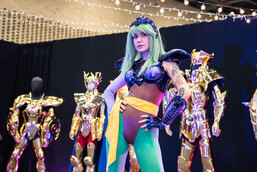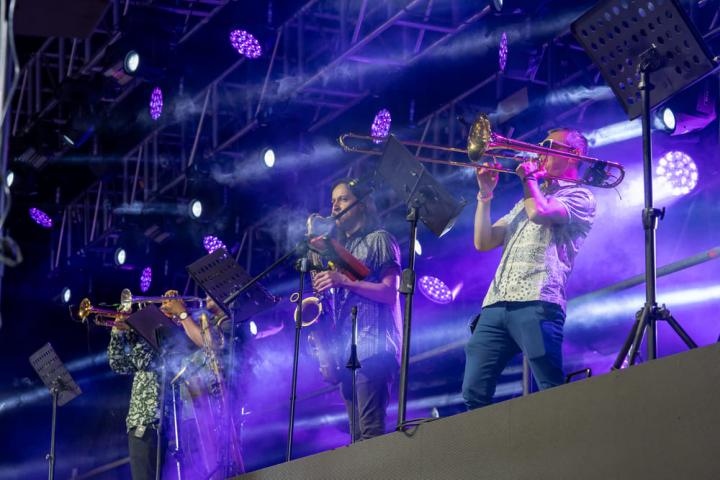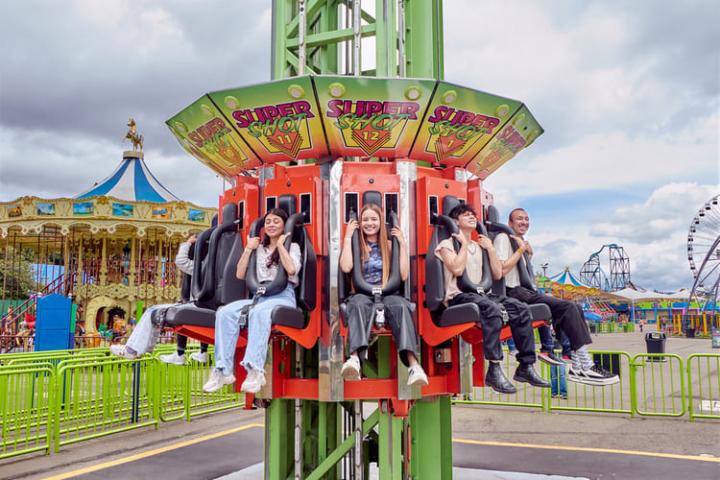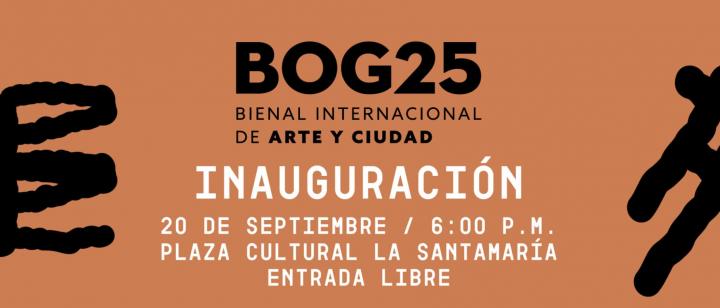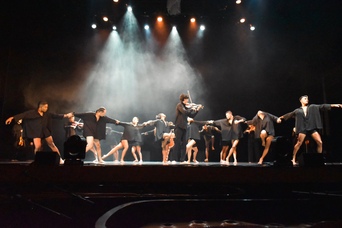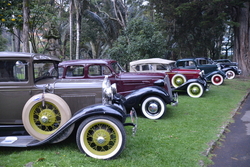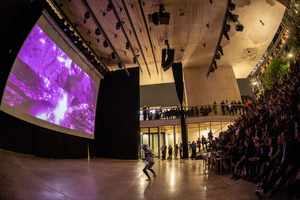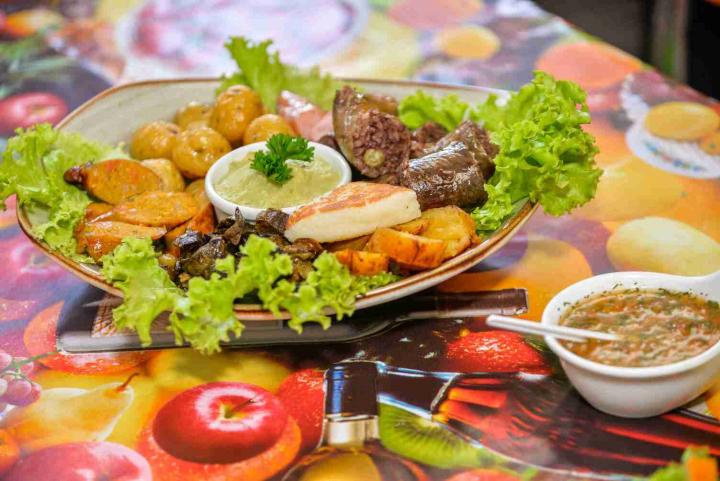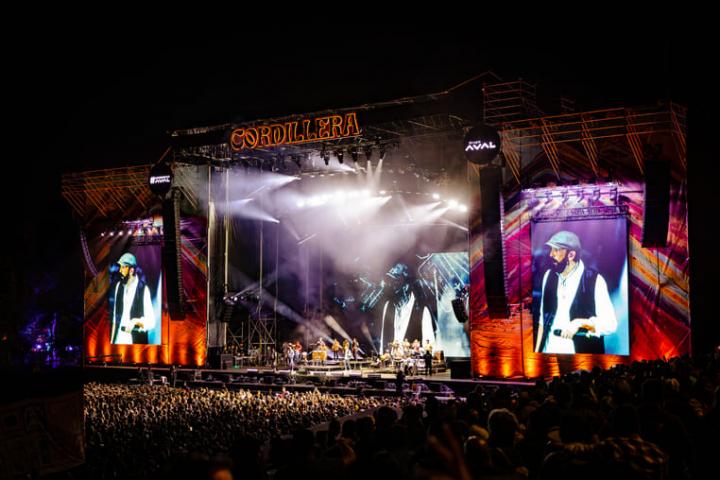Curious interventions by national and international artists, large-scale installations, and captivating performances are part of the agenda you cannot miss during BOG25.
The Bogotá International Art and City Biennial (BOG 2025) not only puts the Colombian capital at the epicenter of global culture but has also sparked the interest of locals and tourists alike with monumental works installed in 18 free-access public spaces throughout the city. A hanging house in Chapinero, a recycled dwelling, and a giant jaguar, among others, are part of the agenda that you cannot miss at the event, which will run until November 9 and showcases the creations of more than 100 national and international artists.
Below, we present seven works/interventions that stand out for their aesthetic and symbolic power or impact on citizens.
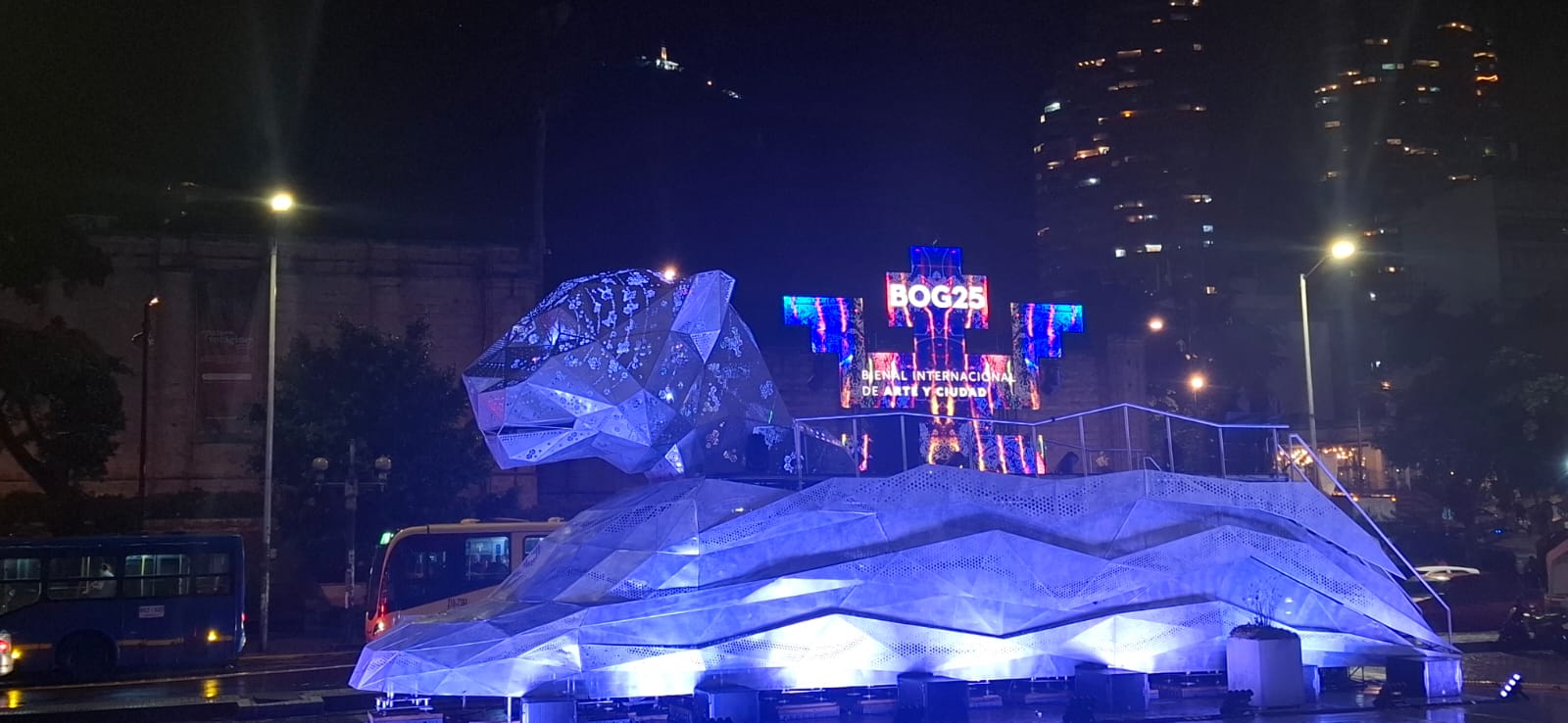
1. Uprooted (or The House in the Air) by Leandro Erlich
In Lourdes Square (Carrera 13 and Calle 63), with the clear intention of being a monumental work that draws attention and invites people to stop, look, and reflect, hangs a suspended house—with its roots exposed—that replicates the traditional homes of neighborhoods such as Chapinero, Quinta Camacho, and La Merced.
This house in the air, by Argentine conceptual artist Leandro Erlich, is a metaphor for a city that welcomes thousands of people every year, who come hoping to put down roots and build a stable future. It symbolizes belonging and identity, the desire to settle down, and the tension that comes with displacement, uncertainty, and the struggle to find affordable housing.
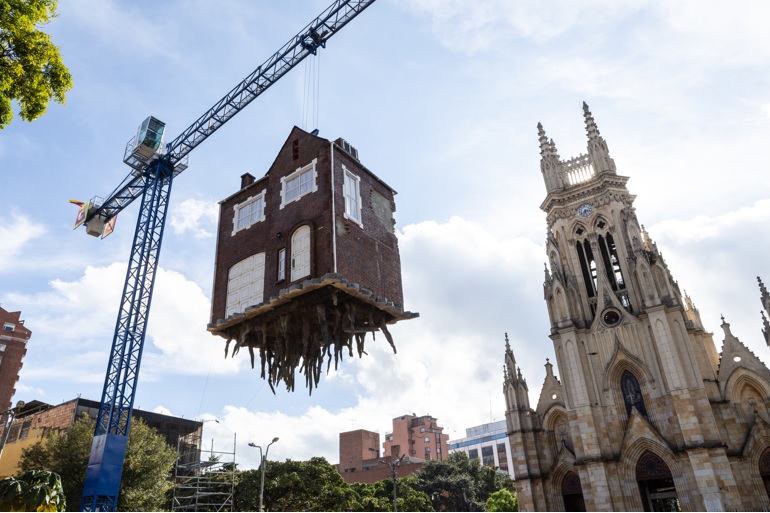
2. Forbidden Sky by Glenda León
At the main headquarters of the National Library (Calle 24 # 5-60) and in the Journalists’ Park (between Calle 13 and Calle 17, and between Carrera Tercera and Carrera Cuarta), this installation by Cuban artist Glenda León explores the ritual and therapeutic use of sacred plants and fungi to access states of prophecy and ecstasy, questioning the established order regarding legal vs. illegal substances, the permitted and the prohibited.
The artwork, which uses symbolic structures such as molecular maps and representations of the cosmos to make the invisible visible, confronts ancestral practices, social prejudices, legal norms, corporeality, perception, and spirituality, which translates into a package of emotions and ways of inhabiting the city.
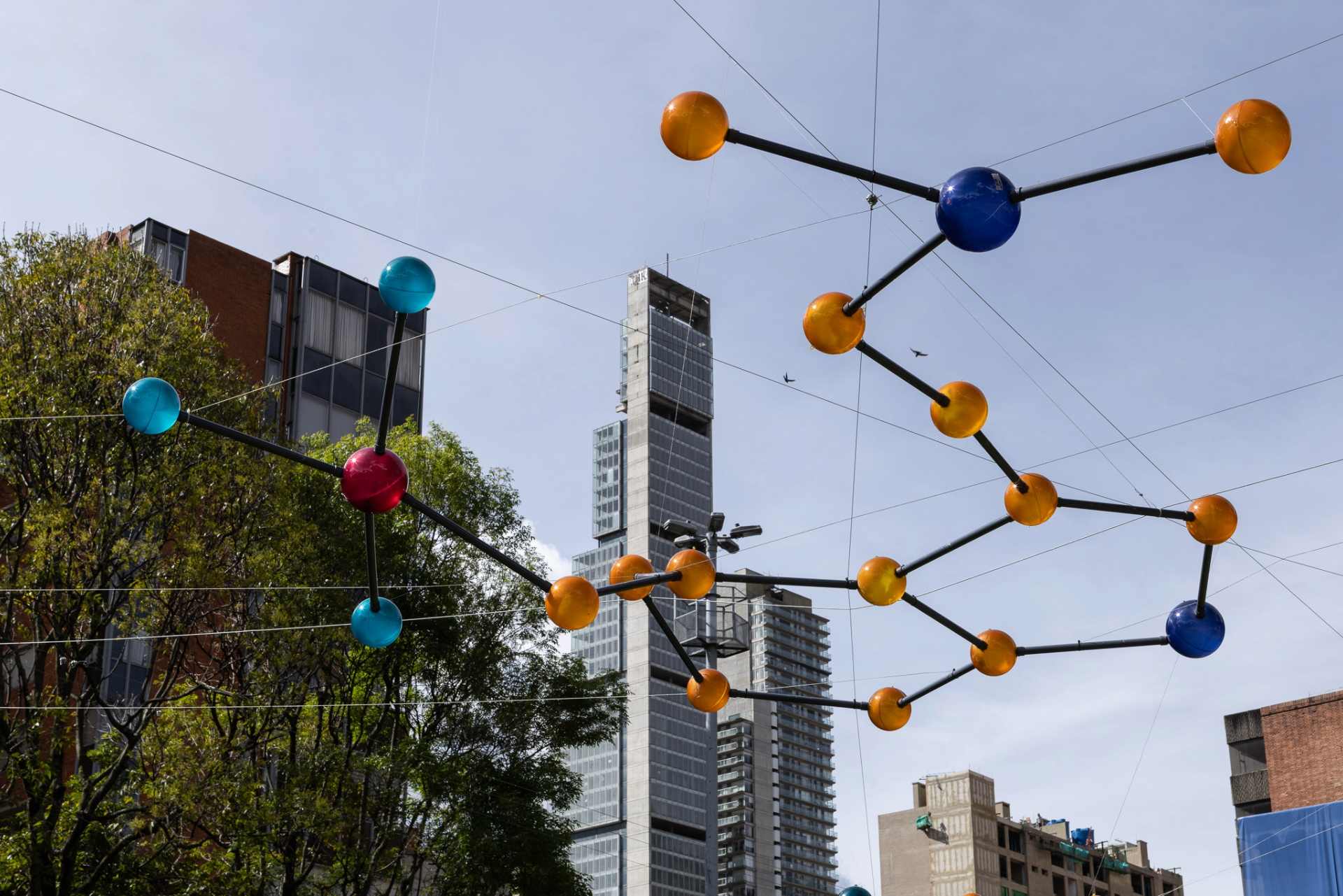
3. Surrender (Flag) by John Gerrard
The work of Irish artist Gerrard can be seen at the emblematic San Francisco Palace, which is undergoing restoration by the District Institute of Cultural Heritage (IDPC). With its façade, this monument embodies the monumental spirit with which republican Bogotá sought to assert itself as a modern city.
This artistic proposal consists of a flag formed by columns of water vapor that wave in reference to the impact of climate change on the planet. Gerrard defines it as a “cautiously optimistic” sign, highlighting the need to make peace with the earth. Presented in high resolution on an LED screen, it is a continuous simulation made with real-time digital graphics, with the position of the sun, shadows, and stars as accurate representations of a real place.
Opening hours are Tuesday through Sunday, from 11:00 a.m. to 6:00 p.m. The San Francisco Palace is located along the Eje Ambiental (Environmental Axis), right next to San Francisco Church and diagonally across from the El Tiempo building on Carrera Séptima.
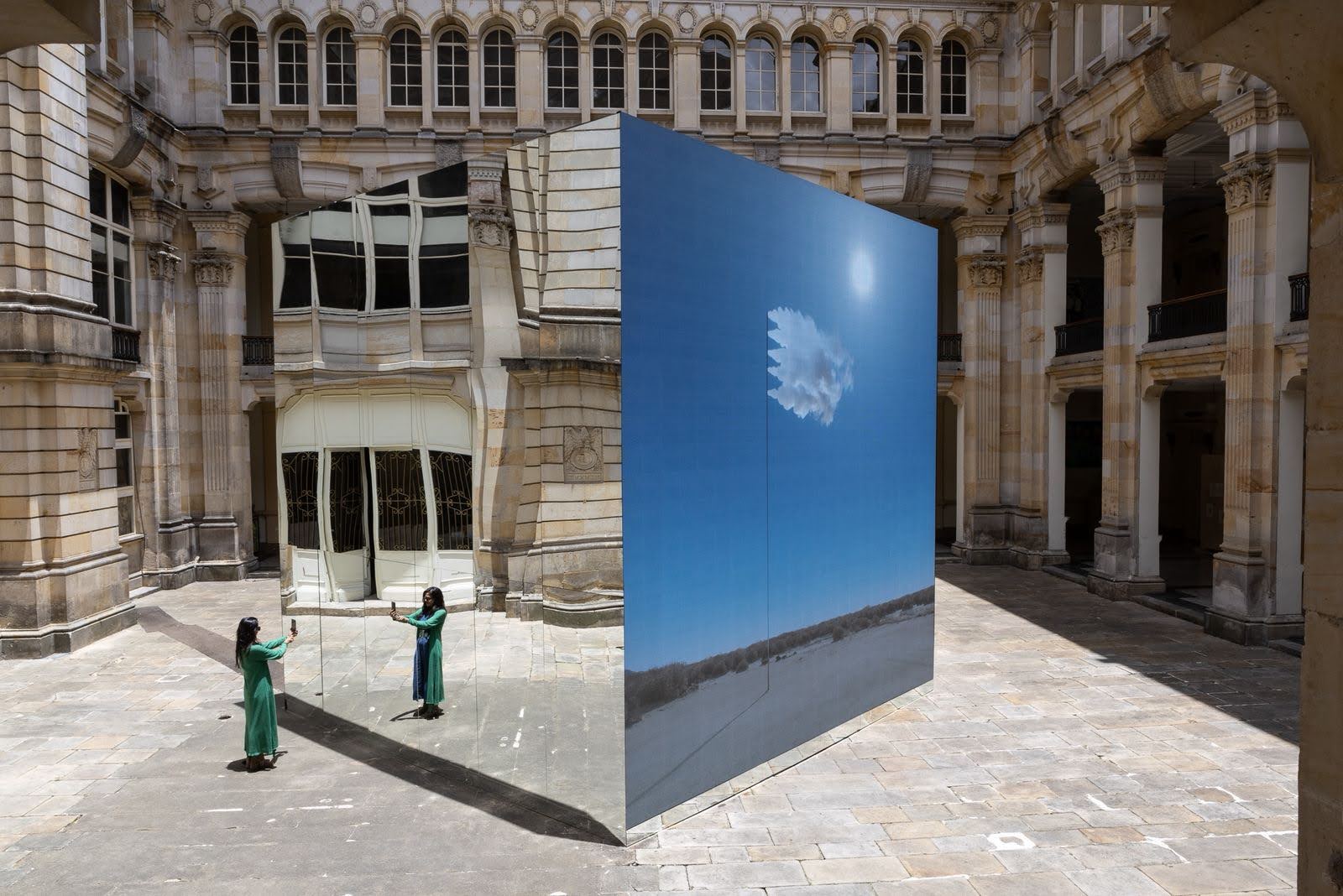
As part of BOG25, the IDPC and the Colombian Society of Architects (Bogotá and Cundinamarca region) invite you to visit this legendary palace. Attendees will learn about the history, architecture, and construction details of this iconic building, designed in the 19th century and considered a benchmark of the neoclassical and republican style in Colombia.
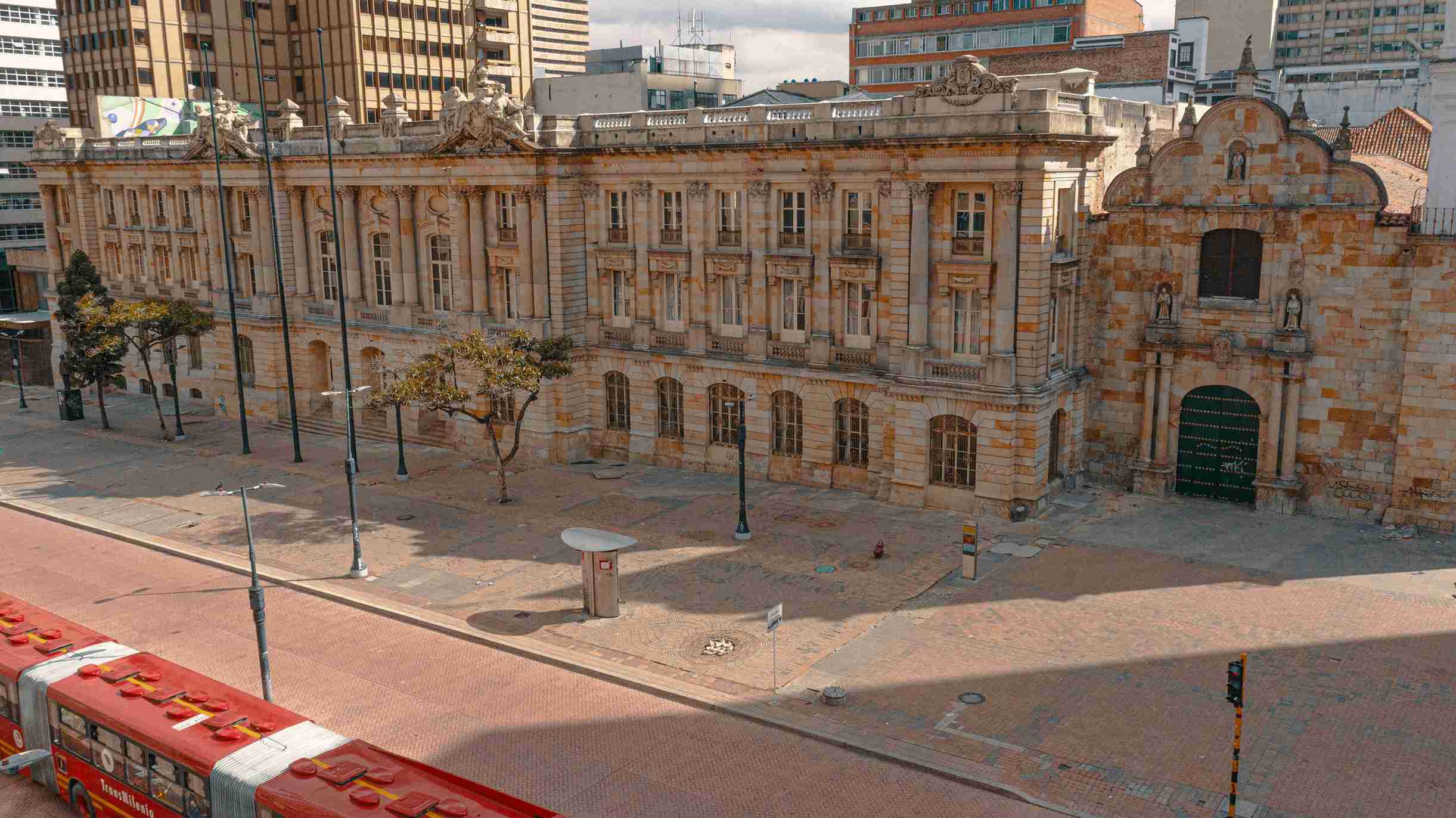
4. Las Nieves Pavilion by Alejandro Tobón
The work Las Nieves Pavilion, Fragile Constructions for the End of the World, by Alejandro Tobón from Antioquia, is a sculptural intervention that transforms public space into a device for stratigraphic memory. Located on the northeast corner of the San Francisco Palace—where Avenida Jiménez and Carrera Séptima converge—the work stands as a symbolic container of the layers of history erased by urban violence.
The sphere, constructed with ephemeral materials laden with meaning (earth, objects, and wood fragments), activates a critical dialogue between the palace's neoclassical architecture and the subaltern memories of downtown Bogotá. This open archive dialogues with the city's past, present, and future.
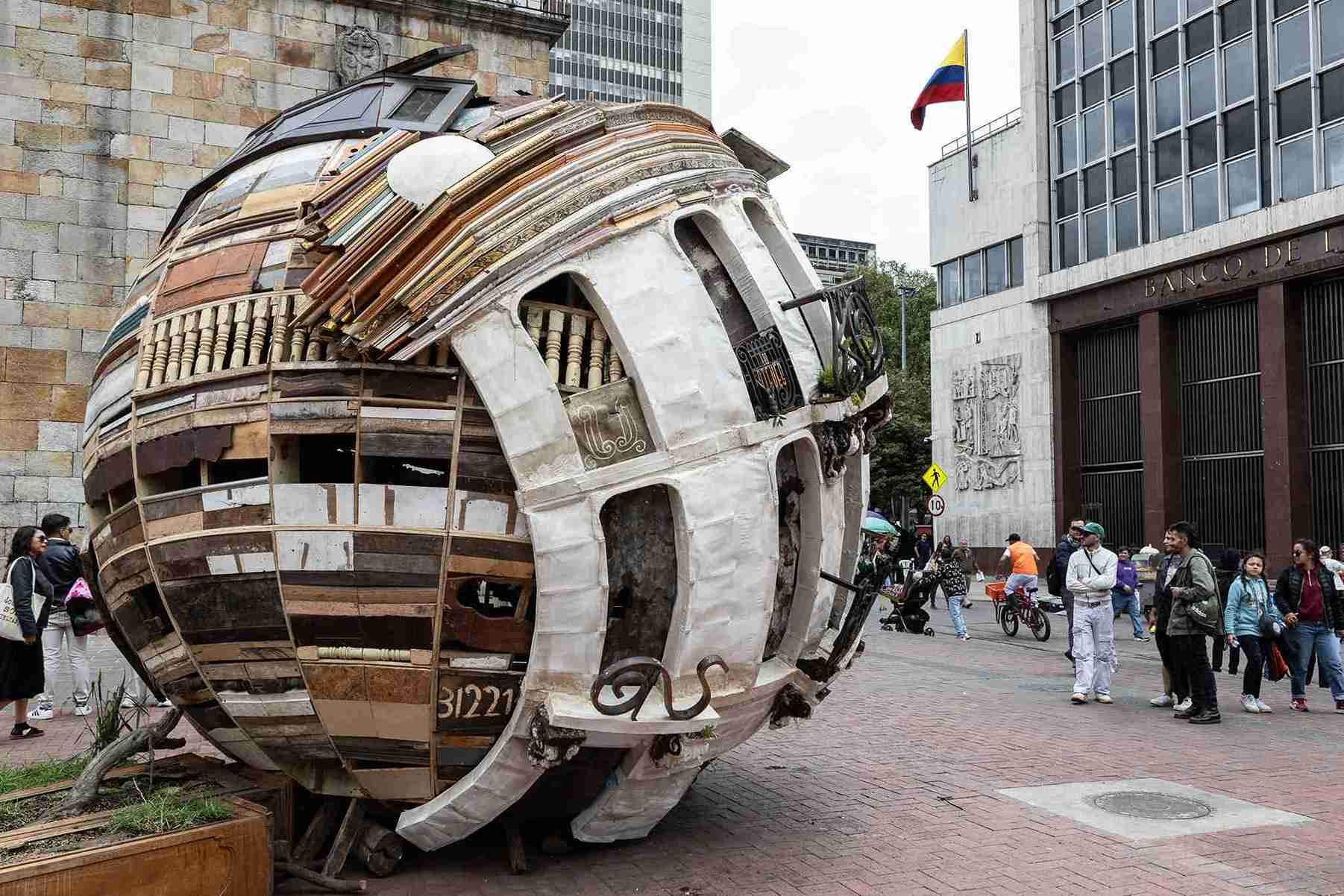
5. Jaguara, Think Beautiful
Like a roar that wants to be heard throughout the city, this immersive installation from the artistic circuit—located at the National Museum TransMilenio Station in Bogotá until September 30, 2025—invites reflection on ancestral roots and the connection with the Amazon through art, music, technology, and nature. The concept of thinking beautifully also refers to a philosophy that promotes harmony and happiness, explored in various publications and cultural collectives. This is a 60 x 16 x 25-foot, 12.5-ton artwork by Colombian artists Leonardo Vilar and Catalina Pulido (from the Sonic Design studio).
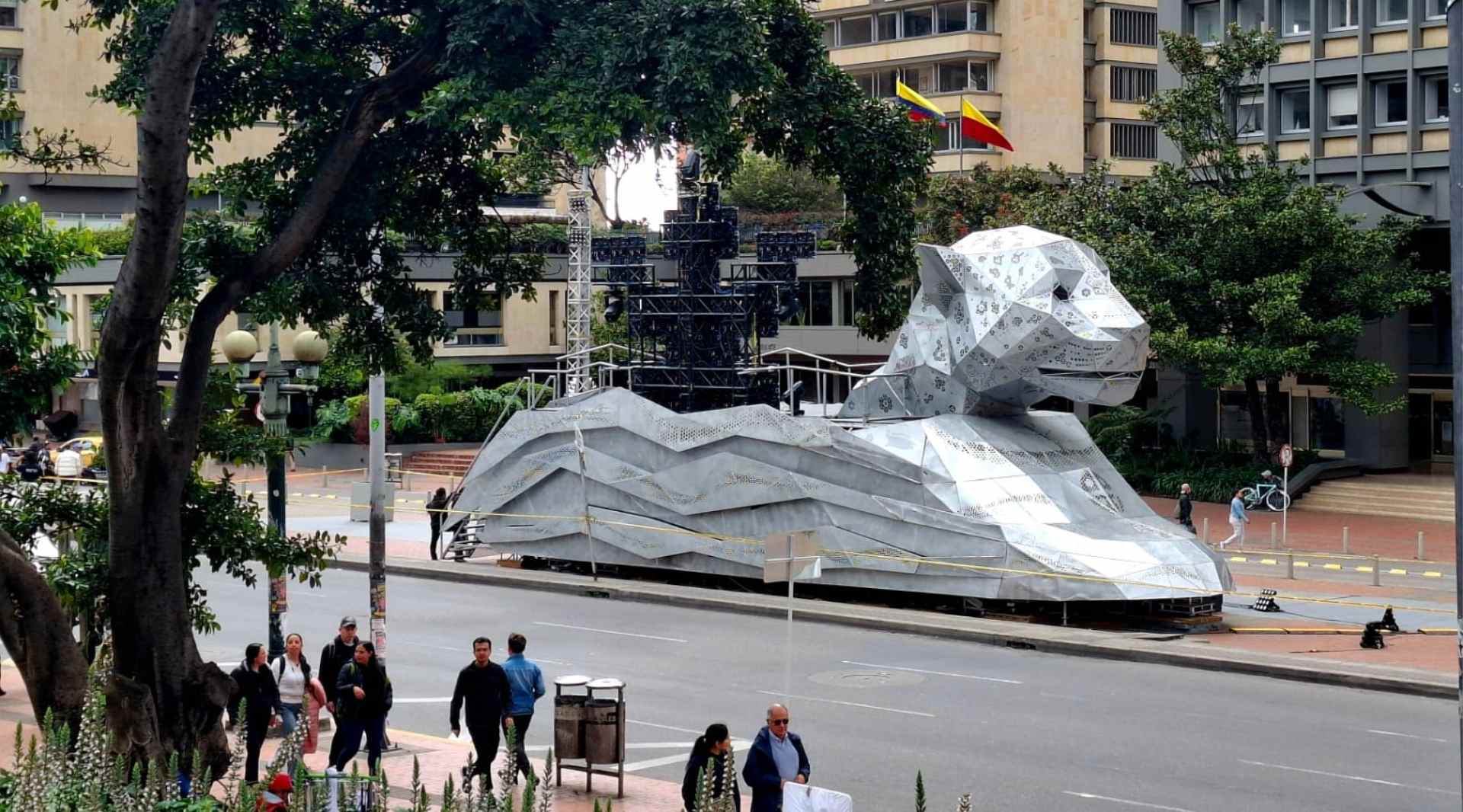
6. Giving Weight to a Few Kisses by Iván Argote
The Colombian artist presents a monumental intervention that highlights the possibilities of human connection. The piece features a six-meter-tall monolith installed at Plazoleta del Rosario (Calle 12C with Carrera 6), covered with thousands of red lipstick kisses made by the artist and visitors alike. Argote invites us to redefine history through participatory actions that honor memory, love, and grief.
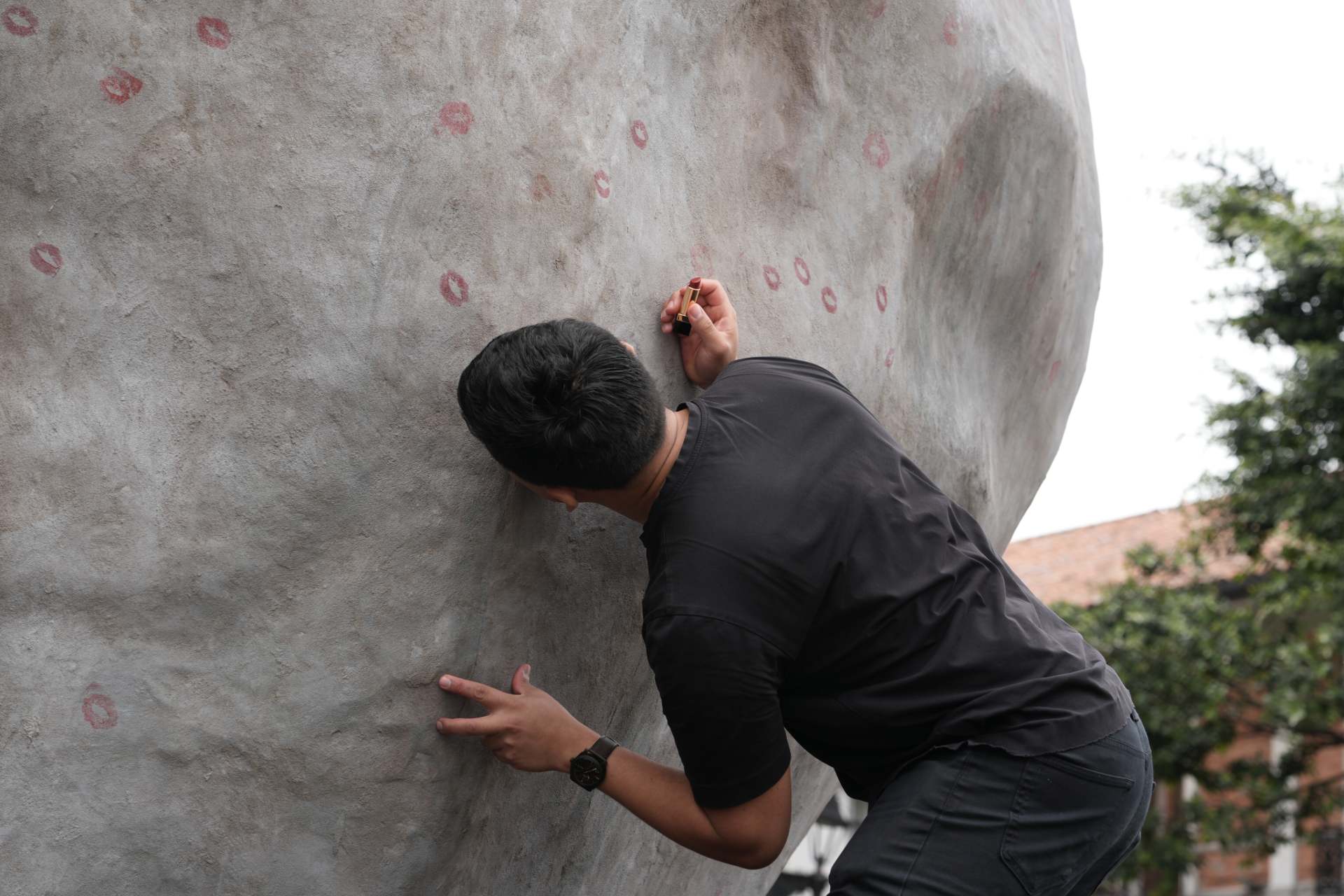
7. The value of the route and satellite works: Alejandro Tobón and Mateo López
These artworks broaden the spectrum of urban dialogue, connecting neighborhoods, heritage, collective meaning, nature, architecture, and citizenship. They allow the Biennial not only to focus on a few major works but also to diversify experiences across different parts of the city.
- Alejandro Tobón, as part of the curatorial section “Essays on Happiness,” presents an intervention in the Jiménez and Séptima area that reflects on the historical processes of colonization and annihilation that have transformed our relationship with the land, questioning how the territory takes on a commercial and fragmented nature despite being a common good.
- Mateo López presents “Ballet Bachué” at National Park Colombia (Carrera 5 #36-05), Monday through Friday from 7:00 a.m. to 4:30 p.m. This video dance piece blends film, puppetry, music, and performance. Created on a theater stage, the installation is projected in the venue’s main hall.
A diverse and free program
The Biennial offers activities for all audiences:
- At the Cinematheque of Bogotá, María Fernanda Cardoso presents her Flea Circus, accompanied by special screenings.
- At the Museum of Visual Arts of Universidad Jorge Tadeo Lozano University, emerging artists such as Adrián Gaitán and Johan Samboní showcase new proposals.
- The Santa Fe Gallery hosts the 13th edition of the Luis Caballero Prize, featuring Angélica Teuta’s installation Emotional Architecture.
- The Bogotá Archive opens its doors with works by Iván Argote, Clemencia Echeverri, and Francis Alÿs, along with interventions in its plaza.
- Heartbeat of the Earth by Amaranta Alcaraz: 10-meter-high textile sculptures installed in the La Santamaría Bullring – Cultural Venue.
The BOG25 agenda can be found at www.bienalbogota.com. If you want more information about plans and destinations during your visit, go to www.visitbogota.co and don’t forget to download the free Visit Bogotá app on your smartphone.

